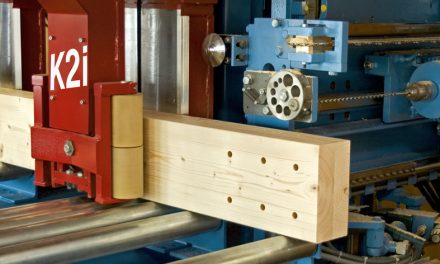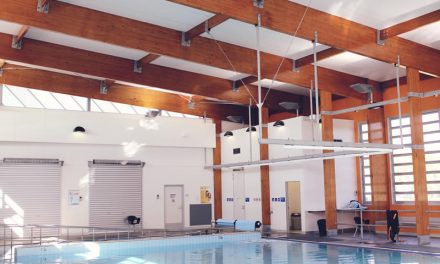After all, our industry’s best work practices and duty of care have been formulated on the basis of this scenario. If this was the case, none of us would have difficulty meeting these standards, and it would be easy to install and finish an installation in one continuous process.
But, this isn’t an ideal world and there are many reasons why timber flooring projects cannot be finished in one continuous process.
It isn’t unusual for commercial jobs to be undertaken in stages and outside of normal working hours. This type of piecemeal approach to installation is accommodated by contractors and accepted by commercial clients as it accommodates both the logistics involved and the economic agendas and time constraints of the enterprises concerned.
When it comes to domestic installations – it’s generally best to complete the project according to best work practices; when all other trades have vacated the building and as a continuous process; because consumers usually have a greater emotional connection to their project, are less knowledgeable about the issues associated with a piecemeal installation and intolerant of the problems these issues create.
No matter what the reason for tackling a job in stages or over a period of time, while not desirable, it isn’t impossible, so long as you are aware of the potential issues.
STORAGE
If sufficient material has been purchased to complete the project and installation is to be undertaken in sections, consideration should be given to where the timber is to be stored until it is required in the future.
Ideally all of the material should be stored in the proposed service area. Alternatively, the timber should be stored undercover. It should be stored at an elevated level, otherwise incorrect storage may damage the timber and/or delay installation.
ACCLIMATISATION
Storing timber in an inhabited service area for prolonged periods can be inconvenient, while timber stored in alternative locations must be acclimatised to the service area prior to installation. Acclimatisation is the process through which timber achieves equilibrium moisture content of the service area, minimising future movement as long as the service area remains stable with regards temperature and relative humidity.
OXIDISATION
Timber exposed to ultra violet light will change colour, this process is referred to as oxidisation. The degree to which a timber will change depends on the extent of its exposure to direct and indirect sunlight and will vary from species to species. The issue here is that even a moderate time lapse between installations will result in floors of an inconsistent colour.
Since oxidisation is a natural process it shouldn’t be seen as a technical problem; the effect is noted in both coated and uncoated timbers, often observed when a stationary rug or piece of furniture is moved, but – as a rule – most (domestic) consumers are very sensitive about anything they perceive as minimising the aesthetics of their timber floors and care should be taken to make them aware of the potential difference.
SCRATCHES OR DENTS
The issue here is that floors left untreated during service are especially susceptible
to the abrasive action of everyday living, dust, grit and stones or sharp objects trapped in footwear and carried in from outside, or the routine use of cleaning equipment and furniture. The risk is that long term exposure may result in scratches or dents of a depth that cannot be removed by the sanding process.
STAINING
The porous nature of an untreated timber floor also makes it vulnerable to the grimy build-up of everyday use such as soiling from foot traffic, especially in high traffic areas; over-spray from cooking, cleaning and personal aerosol products; and liquid spillage, all of which may stain or contaminate the timber to a depth that cannot be removed in the sanding process.
REJECTION
Should untreated flooring become stained prior to the coating system being applied, it is prone to rejection. Rejection has been defined as the inability of a coating to form a continuous film over another surface. Floors put into service before they are sanded and finished are more likely to experience rejection when coated as residual grease, oil, wax and even foot perspiration can leave an invisible and irremovable film that penetrates the depth of the timber fibres.
RESPONSIBILITY
Flooring contractors are consider the experts in their field and as such are bound by a “˜duty of care’ that makes them accountable. If a contractor agrees to vary their work practices, outside of the standard or best work practice they can be held responsible for any problems or issues arising.
The points listed are not a comprehensive representation of all the potential issues/problems arising from fragmented timber floor installations. They are intended to highlight the often obvious but frequently overlooked risks involved in a timber flooring project that runs over an extended period of time.Ray and Sharon Brice specialise in mediation training and project management. They have four decades experience in the flooring industry.
Phone: 0407 591 697 | Email: rayandsharon@timbertradernews.com









